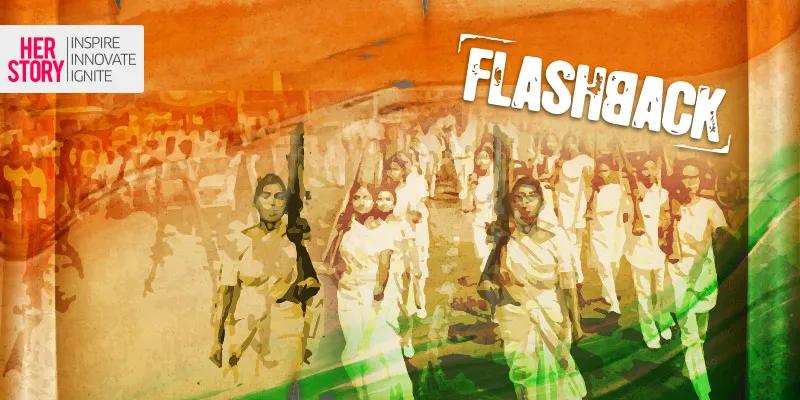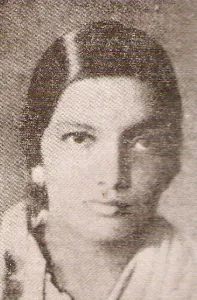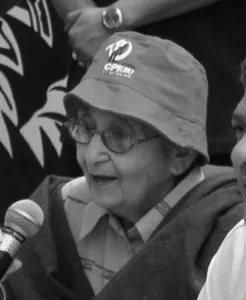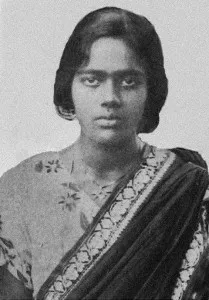HerStory Flashback Indian women revolutionaries
Though Mahatma Gandhi espoused the cause of civil disobedience and followed and encouraged the path of non-violence, India’s struggle for Independence would not have been the same without the contribution of the revolutionaries. These revolutionaries took an active and hard-hitting stance against the British Rule, to make their voices heard.
Often when we speak of Indian revolutionaries, the names that are foremost in our minds are that of Bhagat Singh, Rajguru, Sukhdev, and Surya Sen among many others whose sacrifices have been celebrated through various sources such as history textbooks, movies and songs.

Among these there are a number of intrepid women revolutionaries who have fought brave battles against the might of the British empire and contributed to India’s freedom struggle. A large number of women revolutionaries were from Bengal where the tide of freedom struggle was very strong.
Today, on our 69th Independence Day, HerStory Flashback celebrates and salutes these brave women revolutionaries. Here are a few of them:
Kalpana Datta

Dipankar Das writes that the highest point of India’s armed struggle for independence was the Chittagong Uprising. The uprising began with 64 young men under the leadership of Surya Sen capturing the armies of the British government and the port town of Chittagong.
Kalpana Datta was an active participant and actively took part in the activities of the revolutionaries. Be it bomb making or attacking the symbols of British power.
She was born in the town or Sripur, which is now in Bangladesh. Though taken prisoner and given a life sentence, she was set free early, in 1939. In 1943 she married a communist leader, Puran Chand Joshi.
She died on February 8th in 1995 in Calcutta. She was 81.
Kalyani Das
Kalyani Das was from Bengal and studied in Calcutta University. She was a part of the Bengal Volunteer Corps organised by Subhash Chandra Bose during the 1928/29 Congress session. She was arrested during the Civil Disobedience movement and was detained for eight months for organising an illegal meeting in Hazra Park in 1932. In 1937 she was kept in home domicile.
Lakshmi Sehgal

Born Lakshmi Swaminathan and often referred to as Capt. Lakshmi, Lakshmi Sehgal was an Officer of the Indian National Army. She was born in Madras Presidency and studied medicine. In 1942 she happened to meet Subhash Chandra Bose and became his close aide. For the next couple of years she headed the Rani Jhansi Regiment of the INA.
In 1971 she joined the Communist Party of India and represented it in the Rajya Sabha too. She was also one of the founding members of All India Democratic Women’s Association in 1981. Based out of Kanpur she was actively seeing patients till the age of 92.
Latika Ghosh
Latika Ghosh was educated at Oxford and started the Mahila Rashtriya Sangha (MRS) in Chittagong in 1928. The aim of the sangha was to fight for freedom through the mobilisation of women through political work and primarily resist the Simon Commission.
In 1928 at the behest of Subash Chandra Bose, Latika Ghosh took charge of women volunteers who were to march with men in a procession to inaugurate the Annual Congress meetings in Kolkata.
She passed away in 1987.
Pritilata Waddedar
Sandip Bandyopadhyay who has written about the Revolutionary women in Bengal talks about Pritilata Waddedar. She studied Philosophy and completed her education in Chittagong and Kolkata. She was teaching at a local English medium secondary school.

Sandip writes, Surya Sen directed her to lead an attack on a European club. She conducted the raid successfully and then committed suicide. The leaflet found on her body ended with these sentences: “I earnestly hope that our sisters would no longer nurse the view that they are weak. Armed women of India will demolish thousand hurdles, disregard thousand dangers and join the rebellion and the armed struggle for freedom and will prepare themselves for it. With this hope in my heart I am proceeding today for self-immolation.”
Veena Das
Another revolutionary brave heart from Bengal, she was born to a Brahmo teacher (father) and her mother was a social worker. She was an active member of the semi-revolutionary organisation for women in Bengal- Chhatri Sangha.
Veena Das made an attempt to assassinate Stanley Jackson, the then Governor of Bengal. The assassination failed and she was imprisoned. Subsequently she was released in 1939.
She joined the Congress party and was a part of the Quit India Movement as well.
Reference
A Tale of Two Incidents by Dipankar Das, Economic and Political Weekly, Vol. 40, No. 24 (Jun. 11-17, 2005)
Calcutta Diary, A. M., Economic and Political Weekly, Vol. 38, No. 49 (Dec. 6-12, 2003),
Women in the Bengal Revolutionary Movement (1902-1935), Sandip Bandyopadhyay
Women in Modern India, vol. 4







